How to operate the color difference haze meter correctly?
Recently, Linshang launched a new product LS155 color haze meter. Many customers may not be able to operate it when they first get it. This article will explain to you how to correctly operate a color difference haze meter.
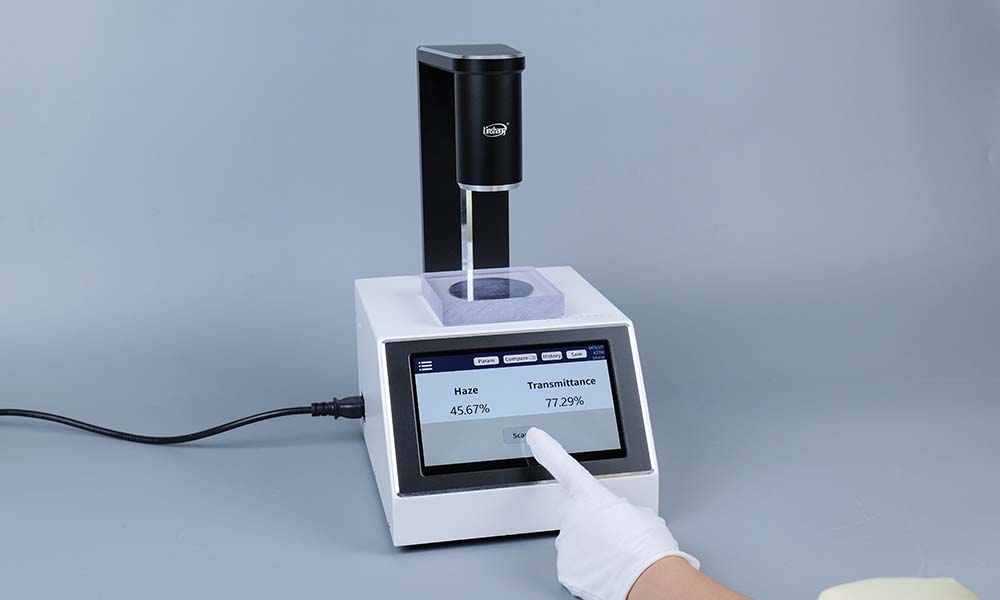
Functions of Linshang Color Haze Meter
Linshang LS155 color difference haze meter adopts a small spectrometer solution, which can be used to measure the haze and light transmittance of a variety of materials, including plastics, glass, films and other transparent and translucent materials, and also displays the transmittance spectral curve. Using the principle of transmittance, it can be used to measure the color and color difference of light-transmitting materials, and can also test the color difference of light-transmitting liquids. The instrument supports both ASTM and ISO standards, and adopts a dual-aperture design of 14mm and 5mm, which can test small-size materials.
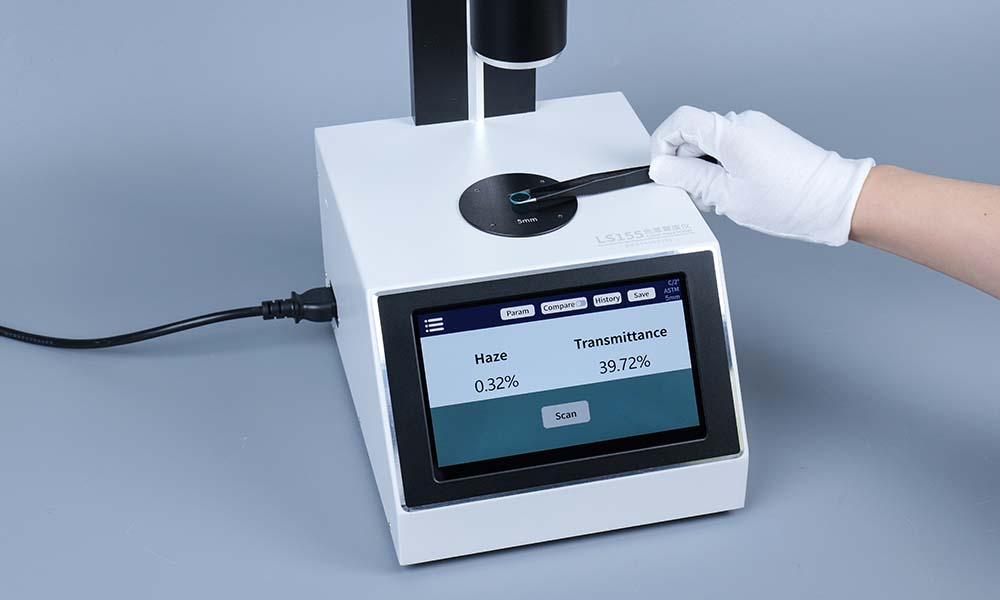
Correct operation method of color haze meter
Power-on calibration
Short press the button on the right side of the instrument to turn it on and open the dust cover. Enter the calibration interface. If you choose calibration, you need to ensure that there is no sample blocking the test hole. Click Device Calibration. After completion, you will enter the measurement interface. You can also choose to skip calibration. Click the parameter settings at the top of the screen to enter the settings interface, where you can select four parameters: haze/transmittance, haze, transmittance, spectral transmittance, and three color spaces: Lab, LCh, and Yxy.
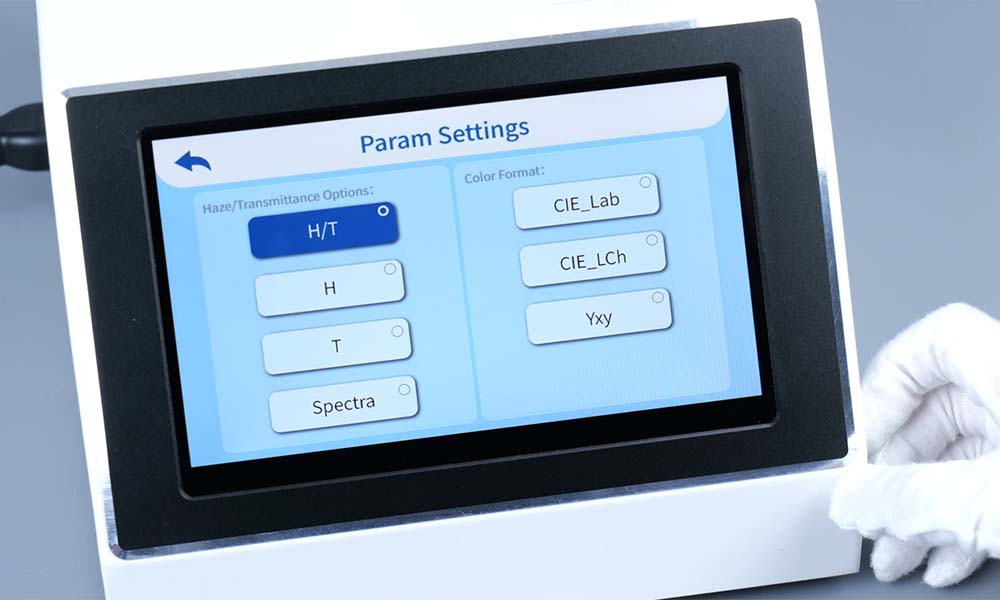
Haze/Light Transmittance Test
The instrument enters the haze/transmittance measurement interface by default. When measuring, you can click the measurement button on the screen, or you can short press the power button on the side of the instrument to measure. You can also turn on the contrast measurement at the top of the screen, test standards and samples separately, and compare haze/transmittance. The instrument will help determine whether it is qualified or not. Passed will be displayed in green, and unqualified will be displayed in red. The tolerance can be set by yourself. When comparing measurements, you can save, add or input standard values by pressing the corresponding keys on the screen.
The instrument can also view the transmittance spectrum curve. In the parameter setting interface, select the spectral transmittance, and click the left and right arrows below to view the spectral transmittance of the specific corresponding wavelength.
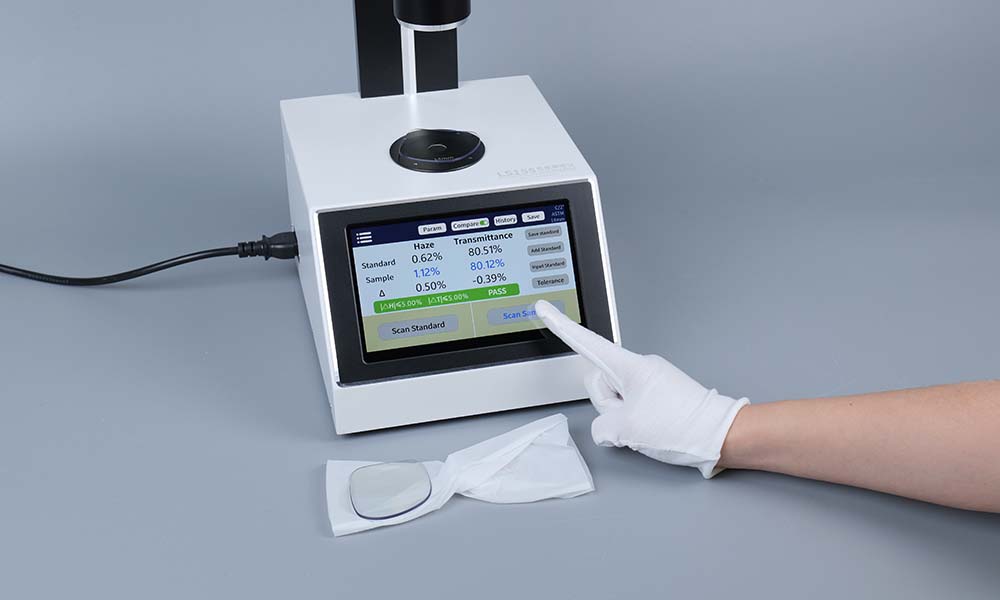
Haze transmittance comparison measurement
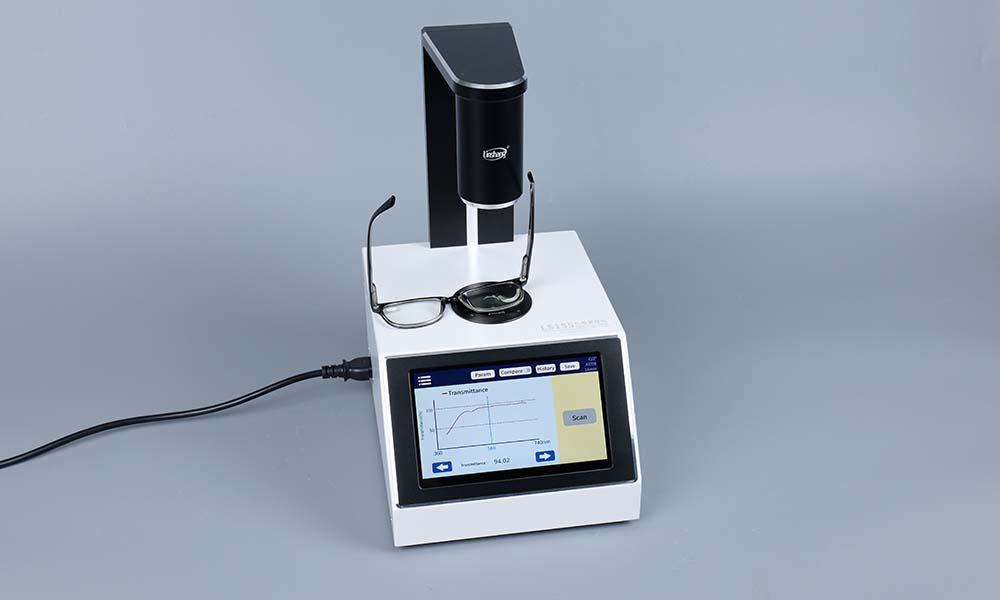
Transmittance spectrum curve
Color measurement/color difference comparison
In the parameter setting interface, select the corresponding color space, and complete the measurement of the standard value and sample value in sequence. You can see the color difference value of the standard product and the sample as well as the color deviation prompt on the screen, and a prompt whether it is qualified or not will be displayed below. Click Standard Value Save to save the current standard value to the instrument. Click Add Standard Value to select a suitable color from the colors stored in the instrument and use it as a standard color for measurement without using a physical standard. When we do not have a physical standard but know the Lab or LCh value of the standard, we can click on the standard value to enter.
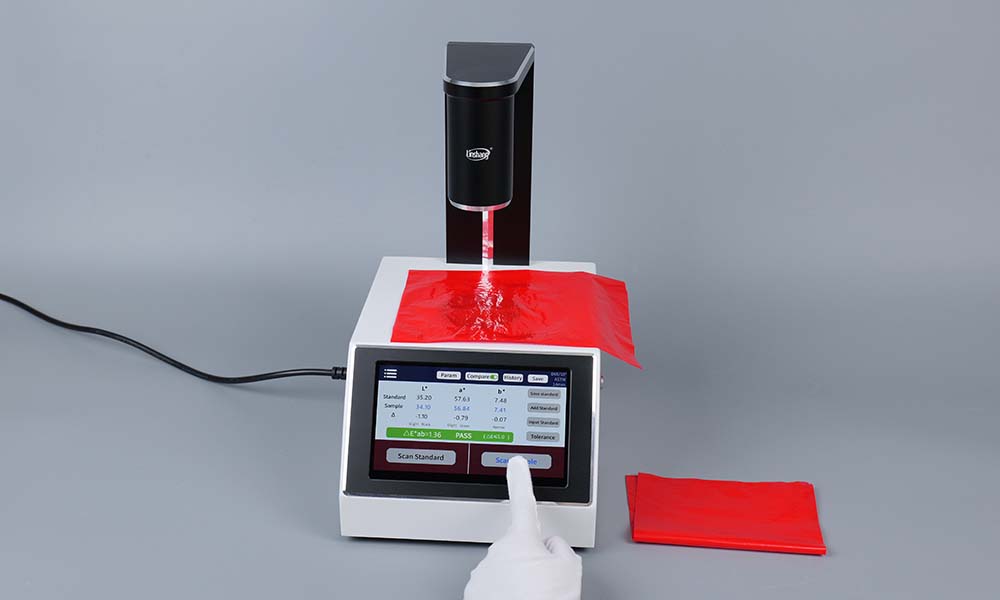
Liquid transmittance and color difference testing
If you want to measure liquid, you can place the instrument horizontally. Place the positioning bracket on the side of the test hole, and place the cuvette containing the liquid to be measured on the positioning bracket for measurement.
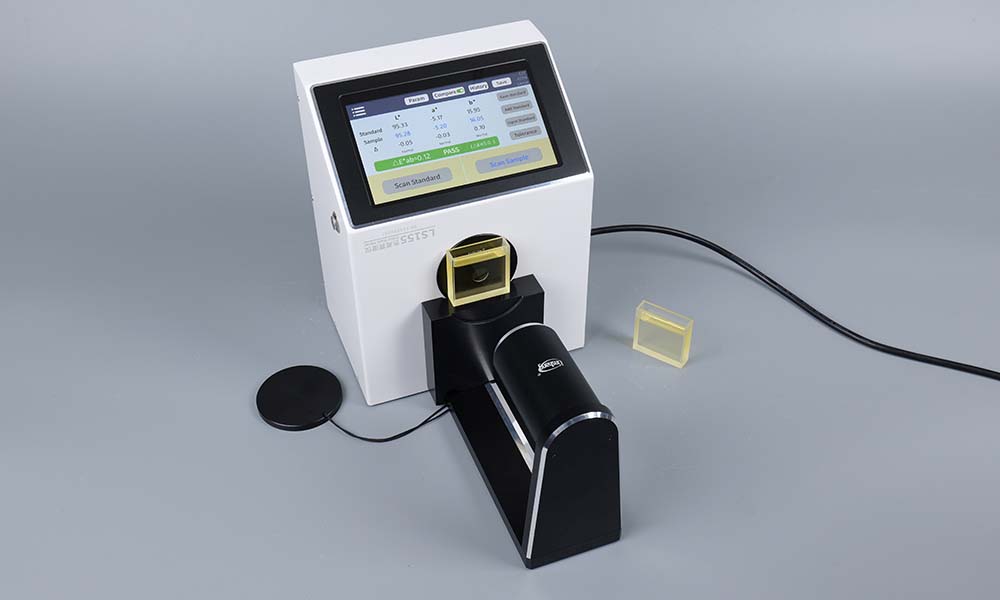
Measuring liquid color difference
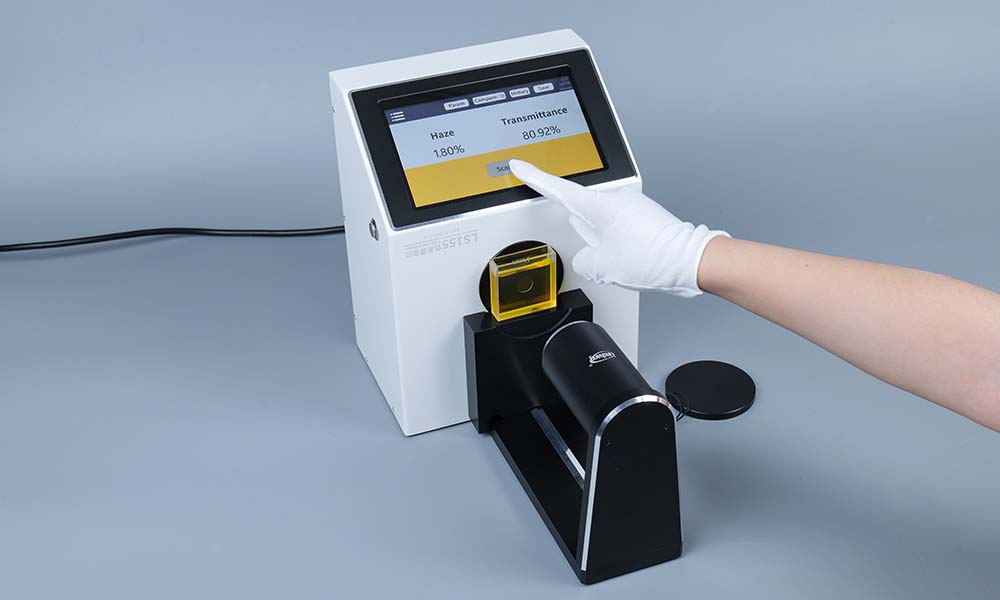
Measuring liquid transmittance
Settings
Click the menu button in the upper left corner to see the instrument's function settings. Chinese and English languages can be switched, and equipment calibration can be used to calibrate the instrument. Standard settings enable standard selection, measurement aperture switching, light source and observer field of view settings. Parameter settings allow you to select the parameters you want to measure. Device information allows you to view the basic information of the instrument, including device number, software version and system status. Restoring the default settings can restore the settings to factory settings and clear the data in the measurement interface. Click Shut Down to shut down the instrument. Pay attention to cover the dust cover.
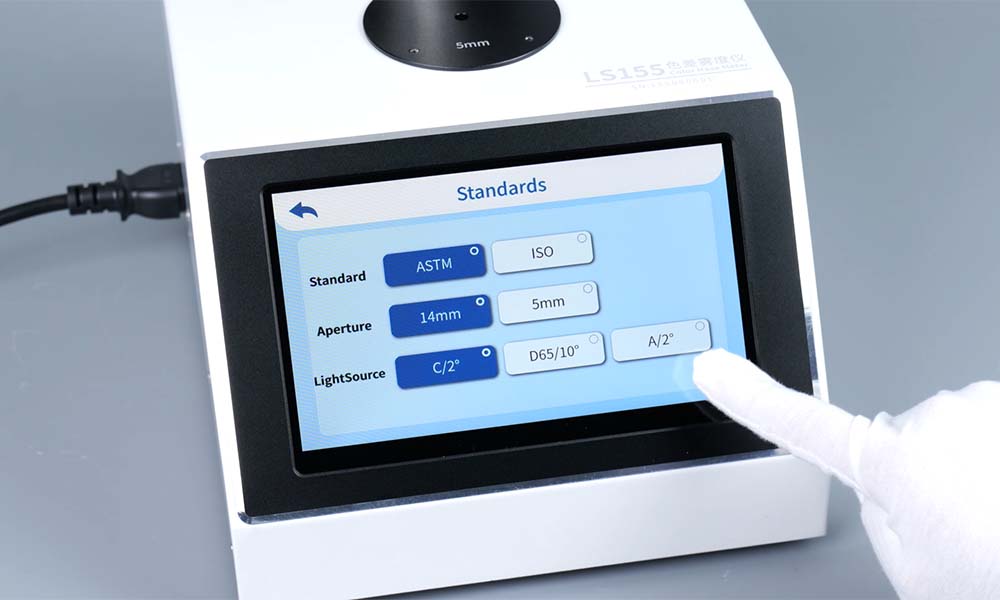
The above is the operation explanation of Linshang’s new LS155 color difference haze meter. If you want to know more information, please contact us.